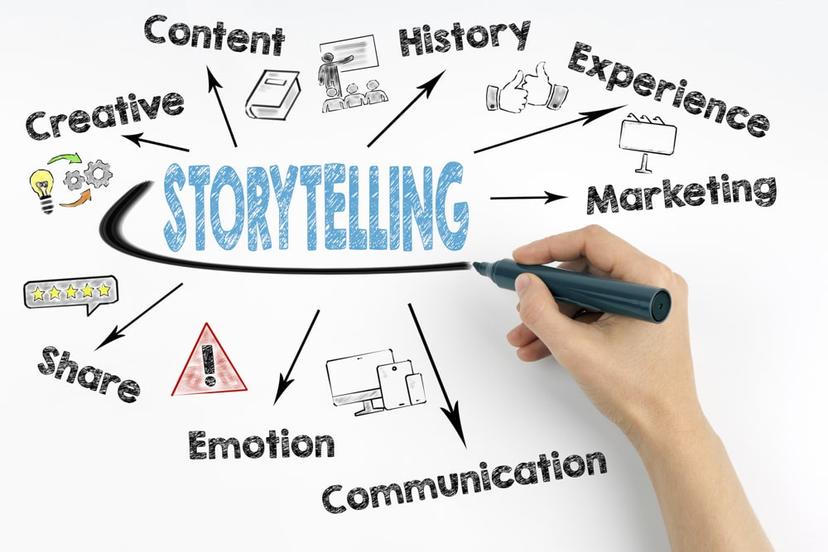The Power of Storytelling in Advertising: Building Emotional Connections
Storytelling has transcended from a mere communication tool to a powerful strategy in advertising, capable of fostering deep emotional connections between brands and consumers. In today's competitive market, where consumers are bombarded with countless advertisements daily, storytelling stands out as a compelling way to capture attention, evoke emotions, and drive engagement. This comprehensive guide explores how storytelling can transform advertising by creating memorable narratives that resonate with audiences on a personal level.
Understanding the Impact of Emotional Storytelling
At its core, storytelling in advertising revolves around crafting narratives that elicit emotional responses from viewers. Research has shown that emotions play a crucial role in decision-making, often influencing consumer behavior more than logical reasoning. By weaving narratives that evoke joy, nostalgia, empathy, or even fear, advertisers can forge lasting connections with their target audience, driving brand affinity and loyalty.
Elements of Effective Storytelling
- Compelling Characters: Introduce relatable characters within your narrative to humanize your brand and connect with viewers on an emotional level. Whether it's showcasing real-life customer stories or creating fictional personas, characters serve as anchors that audiences can empathize with and root for.
- Engaging Plot: A well-crafted plot guides audiences through a journey that unfolds naturally, keeping them captivated from beginning to end. Establish a conflict or challenge that your brand helps resolve, showcasing the transformative impact of your products or services.
- Authenticity and Transparency: Authenticity is paramount in storytelling. Consumers value transparency and honesty, so ensure your narrative reflects genuine values and experiences. Avoid overly promotional content and instead focus on delivering meaningful messages that resonate with your audience's aspirations and beliefs.
- Visual and Verbal Imagery: Use vivid imagery and descriptive language to paint a vivid picture within the minds of your audience. Whether through captivating visuals in video ads or evocative language in written content, imagery enhances the storytelling experience and reinforces key messages.
Applications of Storytelling Across Advertising Channels
- Video Advertising: Video remains a dominant medium for storytelling due to its ability to combine visuals, audio, and narrative elements seamlessly. Whether through short commercials, brand documentaries, or series of testimonials, video ads can convey emotions effectively and leave a lasting impression on viewers.
- Social Media Campaigns: Social media platforms provide fertile ground for storytelling through bite-sized content, such as Instagram stories, Facebook posts, and Twitter threads. Leveraging these channels allows brands to engage with audiences in real-time, fostering interactive storytelling experiences that encourage user participation and sharing.
- Content Marketing: Blogs, articles, and case studies offer opportunities for brands to delve deeper into their narratives and provide value-added content to their audience. By addressing pain points, offering solutions, or sharing inspiring success stories, brands can establish thought leadership and build trust with potential customers.
- Experiential Marketing: Immersive experiences, events, and activations can bring brand narratives to life in tangible ways. Whether through pop-up installations, interactive workshops, or live demonstrations, experiential marketing allows consumers to engage with the brand's story firsthand, creating memorable and impactful connections.
Measuring the Success of Storytelling Campaigns
Effectively measuring the impact of storytelling in advertising requires a blend of qualitative and quantitative metrics. While traditional metrics like reach, engagement rates, and conversion rates provide valuable insights, qualitative feedback such as customer testimonials, brand sentiment analysis, and storytelling effectiveness surveys can gauge the emotional resonance of your campaigns.
Case Studies and Examples of Effective Storytelling
- Nike's "Just Do It" Campaign: By featuring inspiring stories of athletes overcoming adversity, Nike's iconic campaign resonates with consumers' aspirations for personal achievement and determination.
- Apple's "Think Different" Campaign: Apple's campaign celebrates individuals who challenge the status quo and innovate, aligning the brand with creativity and visionary thinking.
- Dove's "Real Beauty" Campaign: Dove's campaign challenges beauty stereotypes and celebrates diversity, fostering a positive emotional connection with consumers.
Storytelling in advertising is more than just a marketing tactic—it's a powerful tool for building emotional connections, fostering brand loyalty, and influencing consumer behavior. By crafting compelling narratives that resonate with audiences' emotions and values, brands can differentiate themselves in a crowded marketplace and leave a lasting impact on their target audience. Embrace the art of storytelling in your advertising strategy to create meaningful experiences that drive engagement, loyalty, and business growth.
Embrace the Power of Storytelling
Incorporate storytelling into your advertising strategy to create meaningful connections with your audience. Discover how David Delavari Advertising can help elevate your brand through compelling narratives and emotional engagement.






































